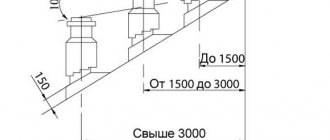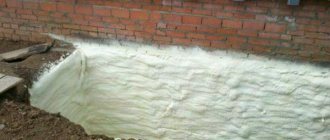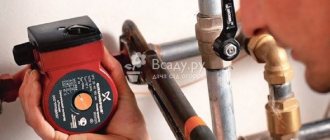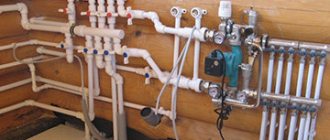Any living space, be it a private house or apartment, is equipped with heating systems. Without this, it is impossible to live in our harsh climatic conditions.
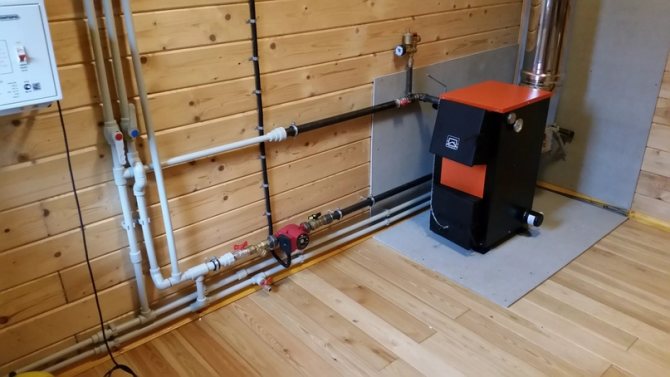
House heating
A heating system is installed in each apartment or country house. But without filters that ensure the purity of the coolant, the system will quickly fail. Filtration of water extends the life of the heating system.
Features of filters for home heating systems
Another name for this filter is "sump". It consists of a unit where the direction of flow of the coolant through the filter changes.
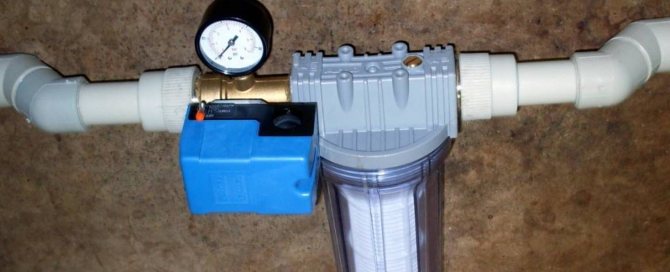

Filter
The device is equipped with a mesh that prevents the spread of debris through the pipes. Dirt settles on the filter element. It is necessary that there is an unobstructed approach to the device for its maintenance.
Where does the dirt in the system come from?
The water contains many metals and lime compounds, which form deposits in the form of scale on the pipe walls. And if the pipeline has been used for a long time and at the same time has never undergone maintenance, then the layers increase, narrowing the channel for the passage of the coolant.
But this is not the only reason for the lack of movement in the pipes. Clogging can be caused by other debris. These can be pieces of thread, metal particles, or grains that have come off the inside of the pipeline.
The most unpleasant surprise can occur if metal pipes have been installed in a private house for a long time and are still in use. Iron corrodes even after periodic cleaning.
Small particles come off along with the coolant flow, are directed to the outlet of the system and enter the boiler filter of the heating system, where they settle.
Recommendation! In case of deterioration in the operation of the heating system, as well as in case of insufficient liquid circulation, the boiler filter must be inspected.
Installation of a sump for the heating system
In order to mount a magnetic filter for heating or a filter of any other type, you should familiarize yourself with the following recommendations that can simplify the whole process of work:
- Even before starting the installation, it is necessary to carefully prepare the pipes of the system, cleaning them from rust and other harmful particles.
- When deciding which mud sump design to use for a particular heating circuit, you need to be guided exclusively by its operational characteristics, in particular, the conditions under which the equipment will be used - operating pressure, temperature indicators, etc.
- It is better to choose the place of installation of the mud collector where access to the device will be as convenient as possible, while taking into account that the filter should be mounted in the area in front of the circulation pump.
- One of the prerequisites for installation is that the cross-section of the filter hole must be identical to the cross-section of the pipe. This measure will guarantee the strength of the connection and will not allow the mechanism to subsequently go away.
Filter types
Filters differ in the type of cleaning.
Sump filter
The device has an angular shape with a filter mesh inside. The design provides for a side outlet where debris settles.With the help of such a device, the coolant is purified from particles of large and medium fractions.


Rough cleaning
Device design
Filters for gas boilers installed on water are divided by design type:
- The connection to the heating pipe is made using a flange, threaded, or welded to the pipe.
- There are two types of device placement: vertical and horizontal.
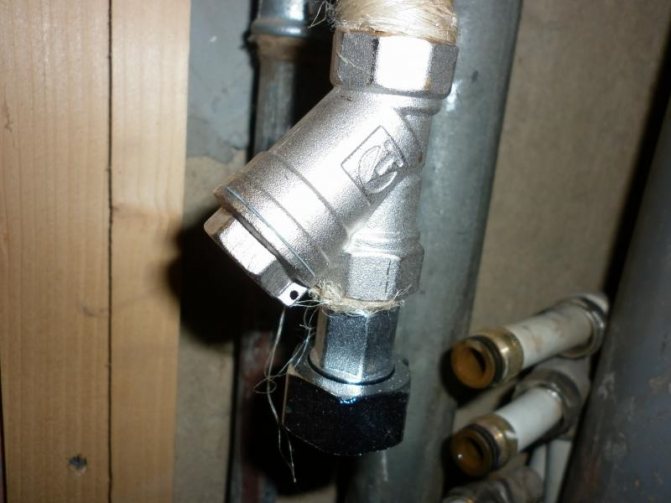

Vertical arrangement
The heating device can be manufactured:
- Brass. Capable of withstanding high temperatures.
- Of steel. Short-lived, wears out quickly.
- Made of plastic. Adapted for low temperature indicators within +90 ⁰С.
There is a more advanced filter design for the heating system. It has a flask with a sump located in the lower part of the device, and a grid is fixed above the flask. When the flows of the coolant bring debris, it settles on the mesh, and it falls down under the influence of gravity. The main accumulation of dirt is retained in the lower part of the filter - the flask.
Also, the device is equipped with a separating element. Its main task is to get rid of accumulated air in the system. When this happens, the drain valve on the device (at the top) opens. This is how the system gets rid of air locks.
Operating principle
The device is equipped with a mesh element, which is placed in the inner part. The mesh blocks the free passage of the coolant flow. Due to this, all large and medium-sized particles settle on the mesh element, cleaning the coolant. Liquid comes into radiators without impurities.
The installation cleans the coolant from dirt, increasing the service life of the heating devices.
Benefits
Advantages of the improved designs:
- The device is equipped with a flask, so the device cannot be disassembled for cleaning from debris.
- There is a drain valve at the bottom of the device for removing water with dirt particles.
- Air plugs are removed through the valve. In this case, the water circulates normally, and the system does not become overgrown with foreign particles.
Place and features of installation
Depending on the type of heating system, the place of installation of the device is determined. Installation in autonomous circuits is carried out in front of a gas boiler, on a bypass or at branch points.
A high-quality installation guarantees the correct operation of the device. Before installation, it is necessary to clean the coolant from debris.
In the event of installation errors, the device quickly fails, and the heating system wears out.
Improper placement of the filter or complete refusal to use it can provoke a breakdown of the pump that pumps water in the heating system. Debris will settle on the blades, damaging the entire device.
Fine filter
The filter element for the circulation pump is mounted as an additional element that cleans the coolant from debris with a smaller fraction.


Fine cleaning
Device structure
Filter types:
- A metal mesh is inserted inside the device. Cell size up to 5 microns.
- A cartridge made of fabric that has been folded several times.
- The cassette contains a polymeric porous filler.
- Mineral sorbent filling.
Operating principle
Installation is carried out after a large debris sump. The element that filters small debris cannot be installed as the main link in the cleaning system, since it very quickly clogs up from particles of a large fraction.
The cassette filters small debris particles, and the coolant circulates through the pipes in a cleaned state.
Benefits
By removing dirt from the liquid, the service life of the entire heating system is extended.Reduces the risk of corrosion deposits on the inner walls of pipes and radiators. This is the main advantage of the fine cleaning device.
Where is mounted
The fine filter is designed in such a way that its location can only be horizontal. During installation, it is necessary to install a faucet behind and in front of the device, one at a time, so that in the event of a device breakdown, it can be dismantled without draining the water from the entire system.
If the pipeline is filled with antifreeze, then the installation of a fine filter is not necessary, since antifreeze does not pass through it.
The installation of a mud collector is carried out along the flow of the coolant flow, reducing damage to the heating system.
Magnetic models of mud collectors
What is a magnetic filter? This is a device consisting of two magnets in parallel with different polarities. Its main task is to clean the coolant from metallic impurities.


Magnetic
Types of devices
The filter can be of the following types:
- Detachable design. The device has two plates that are installed opposite each other. The fixation is done on the pipe. Among the advantages is the quick replacement of the entire device.
- Non-removable device. In shape, it is a pipe made from ferromagnetic alloys.
Operating principle
The plates of the device are positioned in such a way that metal particles in the coolant are attracted to one of the sides. This prevents the heating system from clogging and prevents premature rusting.
Benefits
Positive sides:
- Particles of metal are contained in small quantities, so the device is very rarely cleaned.
- Metal cleaning of the system reduces the formation of scale and rust build-up on the inside of the pipes.
- A clean coolant increases the service life of heating devices by several years.
Installation rules
The device is installed strictly in front of the entrance to the circulation pump. For installation, it is desirable to find a place where the cross-sections of the pipe and the filtering device will be identical. If the dimensions differ, you can use adapters.
When installed, the device is placed vertically and secured with brackets.
Pneumohydro-impulse cleaning of the heating system
It is the best way to clean the system without interrupting its operation if necessary. The compact water-based pneumatic gun is capable of cleaning a pipeline with a cross section of up to fifteen centimeters. Additionally, you will need a connecting hose, "American" and adapters.
There are two most common cleaning methods:
- Flushing of boilers with chemical reagents, preheated to a certain temperature. The solution is fed into the system with the help of a pump and, reacting with scale and destroying it, goes further along with the deposits to the outside (about
Places of installation of filter elements
A dirt filter removes large debris from the coolant. The device is placed at the entrance to the system or in front of the pump. In a large house, it is necessary to install several "mud traps" in the heating system.
The task of the fine cleaning device is to sift out smaller debris, therefore it is installed after a sump that catches large particles.
The function of the magnetic filter is more modest in comparison with previous examples: it filters out metal particles from the water. Installation of such a device is carried out before entering the system in front of the heater.
Chemical cleaning of the heating system
According to experts, the latter type of cleaning is precisely because it is so popular and in demand that, in comparison with other methods, it removes almost any deposits most quickly and efficiently.
As a rule, aqueous solutions of organic and mineral acids, solvents, and alkalis are used as cleaning agents. When using this kind of agent for cleaning heating systems, you must be extremely careful and attentive, use eye and skin protection in your work, since each of the solutions listed above is toxic.
For systems equipped with aluminum radiators, these are not suitable, since they can break the tightness of the components.
To carry out the work, special equipment is required:
- Pumps
- Hoses
- Capacities
- Powder and liquid cleaners
Carrying out cleaning by this method in preparation for the heating season will require several days (in more detail: ""). As a result, capacity will be fully restored, avoiding major overhauls in the event of a system failure.
Maintenance of mud filters
Any type of filter requires periodic maintenance, as debris constantly accumulates inside the device.
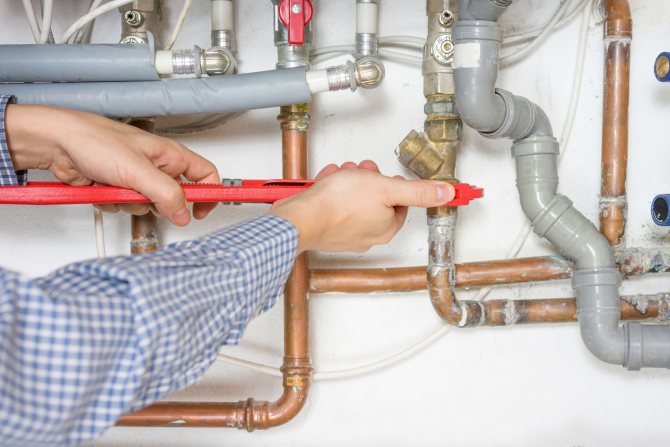

TO mud collectors
How the device is cleaned:
- The taps located on the sides of the device overlap, in this case it is not necessary to drain the coolant from the system.
- Before disassembling, a container must be installed to drain the remaining water.
- There is a plug on the filter that needs to be removed.
- The mesh is washed and reinstalled.
- A muffler is mounted.
- Couplings are twisted.
- The taps are opening.
Periodic filter cleaning extends the operating life of the entire system.


